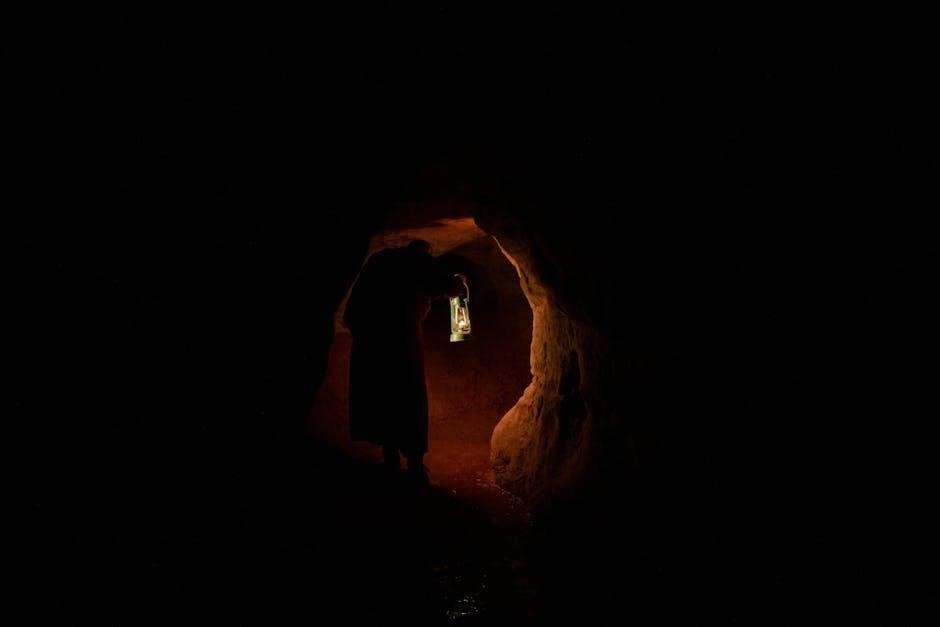Long Island Utopia Guide
Welcome to the Long Island Utopia Guide! Discover hidden gems, picturesque beaches, and captivating history. Explore a blend of natural beauty and vibrant culture. Find the perfect escape and plan your Long Island adventure today!
Long Island, a captivating destination on the eastern coast of the United States, presents itself as a “utopia” for travelers seeking a unique blend of experiences. From its stunning scenery and rich history to its vibrant culture and charming towns, Long Island offers a perfect escape from the hustle and bustle of city life. Imagine a place where tranquility meets adventure, where pristine beaches meet historical landmarks, and where culinary delights meet artistic expressions. This guide unveils the utopian charm of Long Island, inviting you to explore its hidden gems and discover its endless possibilities.
Historical Context: Modern Times/Brentwood
Explore the historical roots of Long Island’s utopian aspirations, focusing on Modern Times, a 19th-century community founded on principles of individual sovereignty, eventually transitioning into the town of Brentwood.
The Founding of Modern Times
Modern Times, a unique utopian community, was established in 1851 in present-day Brentwood, Long Island. Founded by Josiah Warren and Stephen Pearl Andrews, it stood as a social experiment rooted in radical ideals. Warren, a reformer and individualist anarchist, sought to create a society based on individual sovereignty and equitable commerce.
The community attracted non-conformists and free-thinkers, envisioning a haven away from conventional societal norms. This pioneer experiment aimed to implement Warren’s philosophical beliefs into a practical, communal living arrangement. Modern Times represented one of the numerous utopian communities that emerged during the 19th century, fueled by the desire for social reform.
Principles of the Community: Individual Sovereignty and Equitable Commerce
At the heart of Modern Times lay two core principles: individual sovereignty and equitable commerce; Individual sovereignty emphasized the autonomy and freedom of each member, allowing them to govern themselves without external coercion. This meant individuals had the liberty to make their own choices and pursue their own interests, fostering a community built on personal responsibility.
Equitable commerce, advocated by Josiah Warren, aimed to create a fair economic system. It was based on the labor theory of value, where goods and services were exchanged based on the amount of labor required to produce them. The goal was to eliminate exploitation and ensure economic justice for all members of the community.
The Transition to Brentwood
Despite its initial promise, Modern Times faced several challenges that ultimately led to its decline. Internal disagreements, economic hardships, and external pressures gradually eroded the community’s utopian vision. The Civil War further strained resources and diverted attention.
In 1864, after thirteen years of existence, the residents of Modern Times decided to rename their community Brentwood. This marked a symbolic shift away from the radical social experiment and towards a more conventional, integrated society. While the name “Modern Times” faded into history, the ideals and experiences of the community left a lasting legacy on Long Island.

Long Island’s Native American Heritage
Long Island’s history begins with its Native American inhabitants. Explore the legacy of the Algonquian-speaking tribes, including the Shinnecock and Montaukett, and discover their profound influence on the island’s culture.
The Algonquian-Speaking Tribes
Before European settlers arrived, Long Island was home to various Algonquian-speaking tribes, each with their own distinct territories and customs. These tribes, including the Shinnecock, Montaukett, and Unkechaug, thrived on the island for centuries, developing intricate social structures and sustainable ways of life. They were deeply connected to the land and sea, relying on fishing, hunting, and agriculture for sustenance. Their knowledge of the local environment was extensive, and they possessed a rich cultural heritage that shaped the identity of Long Island. The legacy of these tribes continues to be felt today, influencing place names, traditions, and the overall character of the region.
Influence on Present-Day Long Island
The Algonquian-speaking tribes left an indelible mark on present-day Long Island, shaping its cultural landscape in profound ways. Many place names throughout the island, such as Patchogue, Ronkonkoma, and Shinnecock, are derived from Native American languages, serving as constant reminders of their presence. Their deep connection to the land and sustainable practices continue to inspire environmental stewardship efforts. Furthermore, the rich cultural heritage of these tribes is celebrated through museums, historical sites, and educational programs, ensuring that their stories are not forgotten. Their influence extends to art, music, and storytelling, enriching the diverse tapestry of Long Island’s cultural identity. Recognizing and honoring their contributions is essential to understanding the true history of the region.
Exploring Long Island’s Diverse Culture
Long Island boasts a rich tapestry of artistic expressions, culinary delights, and historical treasures. Discover museums, art galleries, and local eateries, offering a unique cultural experience for every visitor.
Museums and Art Galleries
Long Island offers a vibrant cultural scene with museums and art galleries catering to diverse interests. The Long Island Museum in Stony Brook showcases American art, history, and carriages, providing a unique blend of exhibits. Discover local artists and historical artifacts, reflecting the island’s rich heritage. Explore contemporary works and delve into the region’s artistic evolution. From historical societies to modern art spaces, Long Island’s museums and galleries offer enriching experiences for art enthusiasts and history buffs alike. Immerse yourself in the island’s artistic soul and uncover its cultural treasures through these institutions.
Culinary Delights
Long Island’s culinary scene is a delightful fusion of flavors, offering a diverse range of dining experiences. From fresh seafood shacks along the coast to upscale restaurants in charming towns, there’s something to satisfy every palate. Explore the island’s wineries and sample award-winning wines paired with local cuisine. Discover farm-to-table restaurants showcasing the region’s agricultural bounty. Indulge in delectable desserts and artisanal treats at local bakeries and cafes. Whether you’re craving classic American fare or international cuisine, Long Island’s culinary landscape promises a gastronomic adventure. Experience the island’s unique flavors and savor its culinary treasures.
Utopia Parkway: A Dream of Cooperative Housing
Utopia Parkway, a significant roadway in Queens, New York, embodies a fascinating history rooted in the dream of cooperative housing. Conceived as a part of a larger vision for affordable and community-focused living, Utopia Parkway aimed to provide housing for Jewish immigrants. This ambitious project sought to create a harmonious blend of residential spaces and communal areas, fostering a sense of belonging and shared prosperity. Although the original plans evolved, Utopia Parkway remains a testament to the enduring pursuit of utopian ideals within urban planning. Explore the legacy of this unique roadway and its connection to cooperative living.

Natural Beauty and Outdoor Activities
Long Island offers pristine beaches, hiking trails, and snowshoeing adventures. Discover the natural beauty of this coastal paradise, perfect for outdoor enthusiasts seeking tranquility and recreation.
Beaches
Long Island boasts a stunning coastline with diverse beaches, offering something for everyone. From the serene shores of the North Shore to the lively beaches of the South Shore, there’s a perfect spot to unwind and soak up the sun. Enjoy swimming, sunbathing, or simply strolling along the sandy expanses. Explore the iconic Jones Beach, known for its vast boardwalk and vibrant atmosphere. Discover hidden gems like Sunken Meadow State Park, offering breathtaking views and tranquil settings. Whether you seek relaxation or recreation, Long Island’s beaches provide an idyllic escape.
Hiking and Snowshoeing
Beyond its beautiful beaches, Long Island offers fantastic opportunities for hiking and snowshoeing. Explore picturesque trails winding through lush forests and scenic landscapes. Discover the beauty of the Long Island Greenbelt Trail, a sprawling path showcasing the island’s natural diversity. During winter, transform your hiking boots for snowshoes and experience the magic of snow-covered trails. Enjoy a peaceful trek through Caleb Smith State Park Preserve, a haven for wildlife and nature enthusiasts. Embrace the tranquility of the outdoors and discover hidden gems along Long Island’s hiking and snowshoeing routes.

Long Island’s Utopian Communities Beyond Modern Times
Beyond Modern Times, discover other utopian experiments on Long Island. Explore the history and legacy of unique communities that sought to create ideal societies, leaving a lasting impact on the region.
The Society of St. Johnland in Kings Park
Founded in 1866, The Society of St. Johnland in Kings Park represents another fascinating chapter in Long Island’s utopian history. This Christian community aimed to create a self-sufficient village centered on charitable works and social reform; Founded by William Augustus Muhlenberg, an Episcopal clergyman, the community provided housing, education, and care for the elderly, orphaned, and those in need. St. Johnland operated on a principle of shared resources and communal living, reflecting a desire for a more equitable society. Though the original utopian vision evolved over time, its legacy of social service continues to impact the Kings Park area.
Levittown: Post-War Suburban Planning
Levittown represents a different kind of utopian vision, one rooted in post-World War II America’s aspirations for affordable housing and suburban living. Developed by Levitt & Sons, it was one of the first mass-produced suburban developments, offering standardized homes at accessible prices. This innovative approach dramatically changed the landscape of Long Island and the nation, shaping modern suburbia. While not a traditional utopian community in the sense of intentional social reform, Levittown embodied a vision of a better life for returning veterans and their families, promoting a sense of community.

Getting to Long Island
Long Island is easily accessible from various points. By air, you can arrive at Long Island MacArthur Airport (ISP) or fly into one of the major New York City airports, like JFK or LaGuardia, and then travel to Long Island. By train, the Long Island Rail Road (LIRR) offers convenient service from Penn Station in Manhattan to various destinations across Long Island. If driving, major highways like the Long Island Expressway (I-495) and the Northern State Parkway provide direct access. Ferries also connect Long Island to other areas.
Long Island Today
Today, Long Island maintains its unique charm, blending historical roots with modern living. From the Gold Coast mansions to the bustling downtowns, Long Island offers a diverse range of experiences. The area is known for its beautiful beaches, thriving culinary scene, and numerous cultural attractions, including museums and art galleries. Despite its proximity to New York City, Long Island retains a distinct identity with a strong sense of community. It remains a desirable place to live, work, and visit, offering a high quality of life and a rich tapestry of experiences for all.
